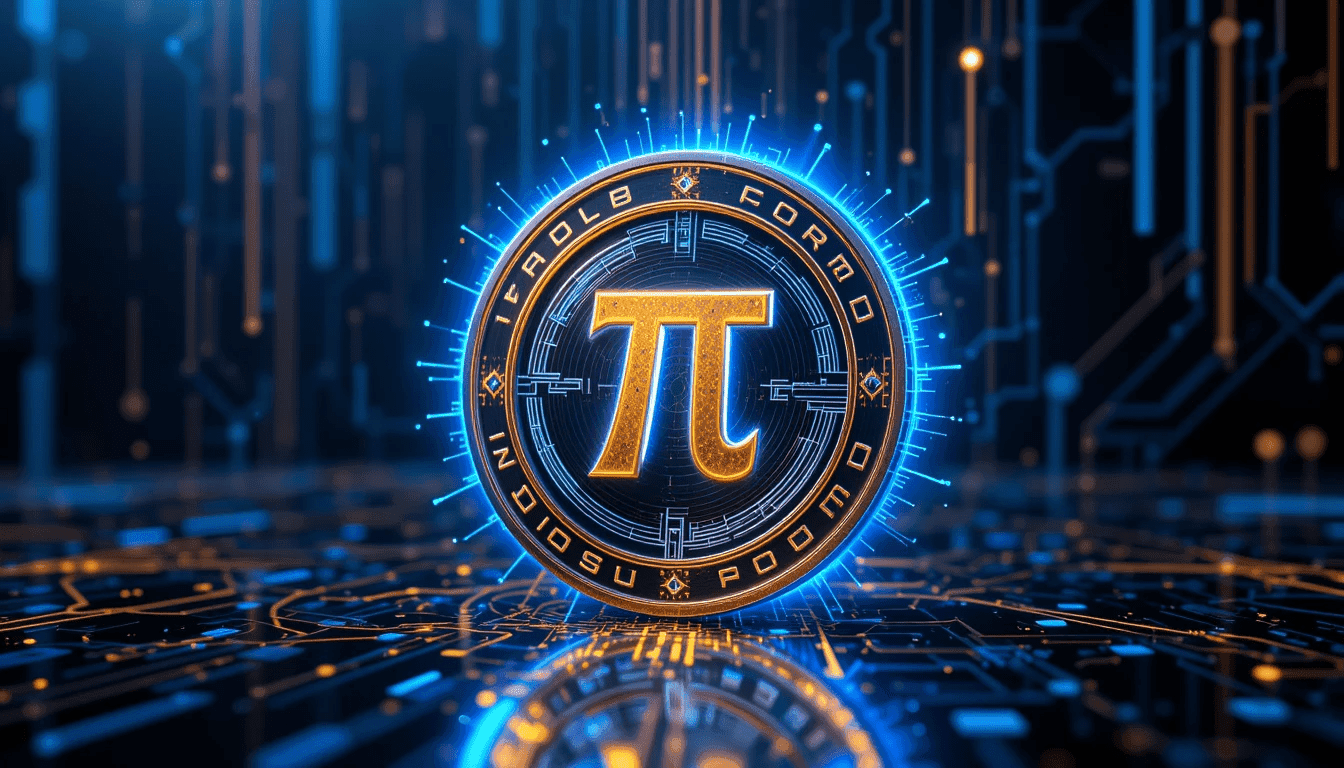The Truth About Pi Coin: Could It Be the Next Bitcoin?
Jan 24, 2025
What is Pi Coin?
Pi Network has emerged as one of 2025's most talked-about cryptocurrency projects. On the surface, it promises mobile cryptocurrency mining that anyone can access. However, it faces mounting criticism over its centralized control, discrepancies in user numbers, and inflationary tokenomics.
Pi Network, developed by Stanford graduates Nicolas Kokkalis, Chengdiao Fan, and Vince McPhillip, began in 2019 as a decentralized finance project. It enables users to mine cryptocurrency using a mobile app, claiming that accessibility should be universal. Despite these promising ideals, many in the cryptocurrency community question its claims and structure.
While Pi Network reports over 60 million users worldwide, blockchain activity tells a different story, revealing a stark gap between these figures and actual participation. Critics have also pointed to the project’s reliance on advertising revenue and centralized control, which some argue prioritizes monetization over decentralization and innovation.
With the anticipated transition to an “open network” in early 2025, Pi Network finds itself at a crucial juncture. This shift could either silence its critics or validate their skepticism, fueling the intense buzz surrounding the project.
Pi Coin: A Timeline of Key Events
Since its launch in 2019, Pi Network has progressed through several developmental milestones, from its testnet phase to the current push for an open network. Below is a timeline of major events in Pi Network’s history:
March 14, 2019: Official Launch
Pi Network debuted on Pi Day (March 14), symbolizing the mathematical constant π (3.14). Users, referred to as "Pioneers," could mine Pi cryptocurrency directly from their smartphones via the app.March 14, 2020: Testnet Phase Initiation
On its first anniversary, Pi Network launched its testnet phase, enabling the deployment of distributed nodes worldwide. This phase allowed developers to test the blockchain and create utilities using Test-Pi tokens.Late 2020: Introduction of the Node Program
Pi Network introduced its node program, empowering users to operate network nodes on personal computers. This contributed to the network’s security and transaction validation.December 2021: Enclosed Mainnet Launch
Pi Network transitioned to its enclosed mainnet, where the blockchain went live but was isolated from external connectivity. During this phase, users could complete KYC verification and migrate their Pi tokens to the live mainnet.October 2023: Roadmap Announcement
The Pi Core Team revealed a detailed roadmap outlining the network’s achievements, current projects, and future plans. This roadmap aimed to build trust by providing greater transparency.December 2024: Open Network Update
Originally slated for the end of 2024, the launch of the open mainnet was postponed to early 2025 to accommodate more users completing KYC verification and migrating their tokens.January 2025: Mainnet Migration Progress
By January 2025, Pi Network reported over 18 million KYC-verified users, with more than eight million successfully migrating their tokens to the mainnet.
Differences Between Pi Coin and Bitcoin
Bitcoin, launched in 2009, is the world’s most recognized cryptocurrency, valued for its decentralized structure and capped supply of 21 million coins. Pi Coin, on the other hand, aims to revolutionize accessibility through mobile app-based mining but is still in its infancy with no determined market value.
While Bitcoin operates on a proof-of-work (PoW) mechanism requiring high computational power, Pi Network uses a unique Stellar Consensus Protocol (SCP), making mining possible on smartphones without draining resources. However, Pi’s inflationary tokenomics and centralized node control differ significantly from Bitcoin’s decentralized ethos.
Advantages of the Pi Network
The Pi Network seeks to democratize cryptocurrency by removing traditional barriers to entry like expensive mining equipment and banking services. Users can mine Pi coins on their smartphones, making the process accessible to virtually anyone.
The network leverages the Stellar Consensus Protocol (SCP), which offers several advantages, including energy efficiency, fast transaction speeds, and decentralized control. However, this protocol also has limitations, such as the need for stable internet connections and trust relationships between nodes, which could hinder adoption in certain regions.
Despite these challenges, Pi Network’s focus on inclusivity and sustainability could pave the way for a more user-centric digital currency ecosystem.
Step-by-Step Guide to Mining Pi Coin
Pi Network’s approach to mining sets it apart from traditional cryptocurrencies. Below are the steps to get started with mining Pi Coin:
Download the Pi Network App
For Android devices: Visit the Google Play Store and search for “Pi Network.”
For iOS devices: Head to the Apple App Store and search for “Pi Network.”
Create an Account
Sign up using your phone number or Facebook account.
Choose a unique username and set a secure password.
Enter an Invitation Code
Pi Network operates on an invite-only model, requiring a referral code from an existing user. If you don’t have a code, you can search online or ask someone already on the platform.
Complete Your Profile
Provide your real name and a valid phone number for account recovery.
Start Mining
Tap the lightning bolt icon in the app to begin mining.
Each mining session lasts 24 hours; you’ll need to re-tap the icon daily to continue.
Increase Your Mining Rate
Invite friends to join Pi Network using your unique referral code.
Participate in community discussions to stay informed and potentially boost your mining rate.
Build a Security Circle
After mining for three days, you can create a security circle by adding trusted members, enhancing network security.
Is Pi Coin Legit or a Potential Scam?
While Pi Network claims to democratize cryptocurrency, several factors cast doubt on its legitimacy. Below are some key concerns:
User Engagement and Transparency Issues
Pi Network claims over 60 million users, yet blockchain explorers report only 9.11 million wallets. Of these, only 20,000 demonstrate daily activity, raising concerns about inflated user statistics.
Development Delays and Centralization
Six years after its launch, Pi Network still lacks a fully operational mainnet. Furthermore, all active nodes are controlled by the Pi Core Team, contradicting its claims of decentralization.
Inflationary Tokenomics
The circulating supply of Pi tokens has rapidly inflated, doubling within a year. Without mechanisms to manage supply and demand, the token’s value is at risk of devaluation.
Privacy Concerns
The mandatory KYC process requires users to submit sensitive personal data, raising questions about data security and privacy.
Revenue Model and Advertising
Pi Network’s reliance on in-app advertising creates skepticism about its financial model. Critics argue that the focus on ad revenue detracts from the project’s stated mission of innovation and decentralization.
FAQs About Pi Coin
1. What is Pi Coin’s purpose?
Pi Coin aims to make cryptocurrency accessible by enabling mobile mining and simplifying blockchain participation.
2. Is Pi Coin tradable on exchanges?
As of now, Pi Coin is not listed on any major exchanges, and its market value remains undetermined.
3. How does Pi Network’s mining differ from Bitcoin’s?
Pi uses the Stellar Consensus Protocol for energy-efficient mining, unlike Bitcoin’s resource-intensive proof-of-work mechanism.
4. Is Pi Coin a scam?
While not explicitly labeled a scam, Pi Network’s lack of transparency, centralized control, and delayed progress have raised concerns.
5. What are Pi Network’s biggest challenges?
Key challenges include centralization, inflationary tokenomics, user transparency issues, and privacy concerns.
6. When will Pi Coin launch its open mainnet?
The open mainnet launch is expected in the first quarter of 2025.
In conclusion, while Pi Network has garnered significant attention for its innovative approach, its long-term viability and authenticity remain under scrutiny. Investors should exercise caution and conduct thorough research before engaging with the platform.

Pi Network Token Crash Raises Transparency Concerns

Pi Network Coin Gains Momentum in Crypto Market

Binance Pi Network Listing Rumors Spark After Logo Clue and Blockchain Activity

Pi Network Price Surge: What’s Driving the 33% Spike in PI Token Value?

Pi Coin Trading Halted | BitMart & Banxa Delisting News

Pi Coin Price Prediction 2025: Chainlink Integration Fuels 228% Surge Forecast to $2.50

Pi Network Price Surge: Chart Signals a Potential 135% Bullish Breakout

Why KYB Compliance Is Key for Exchanges Eyeing Pi Network Market Entry

Pi Ad Network Expansion: Now Open to All Ecosystem Listed Pi Apps

Pi Network Price Drops to All-Time Lows as Supply Pressure Builds

